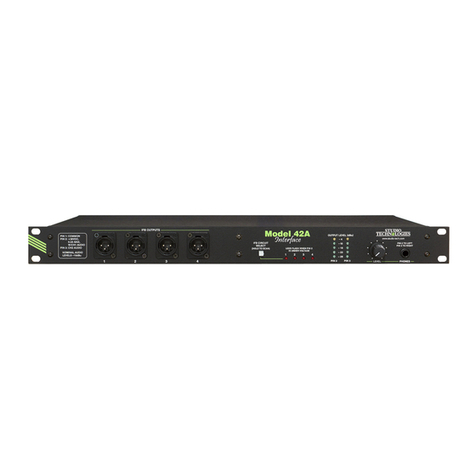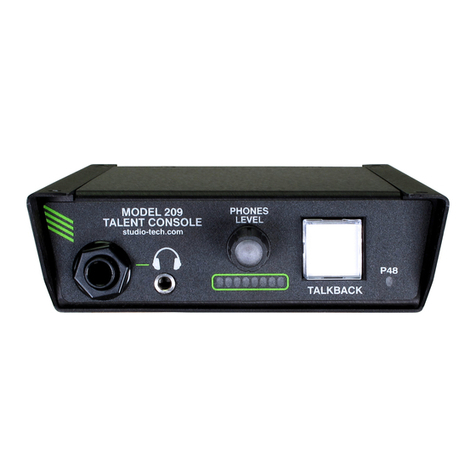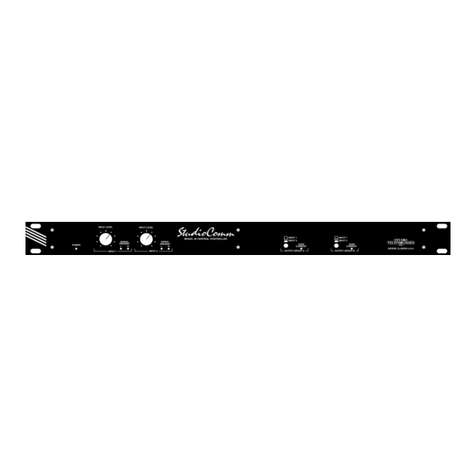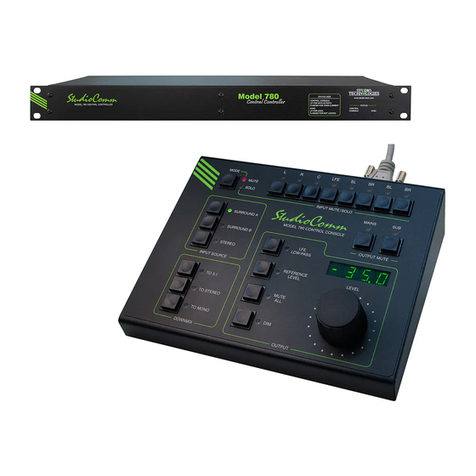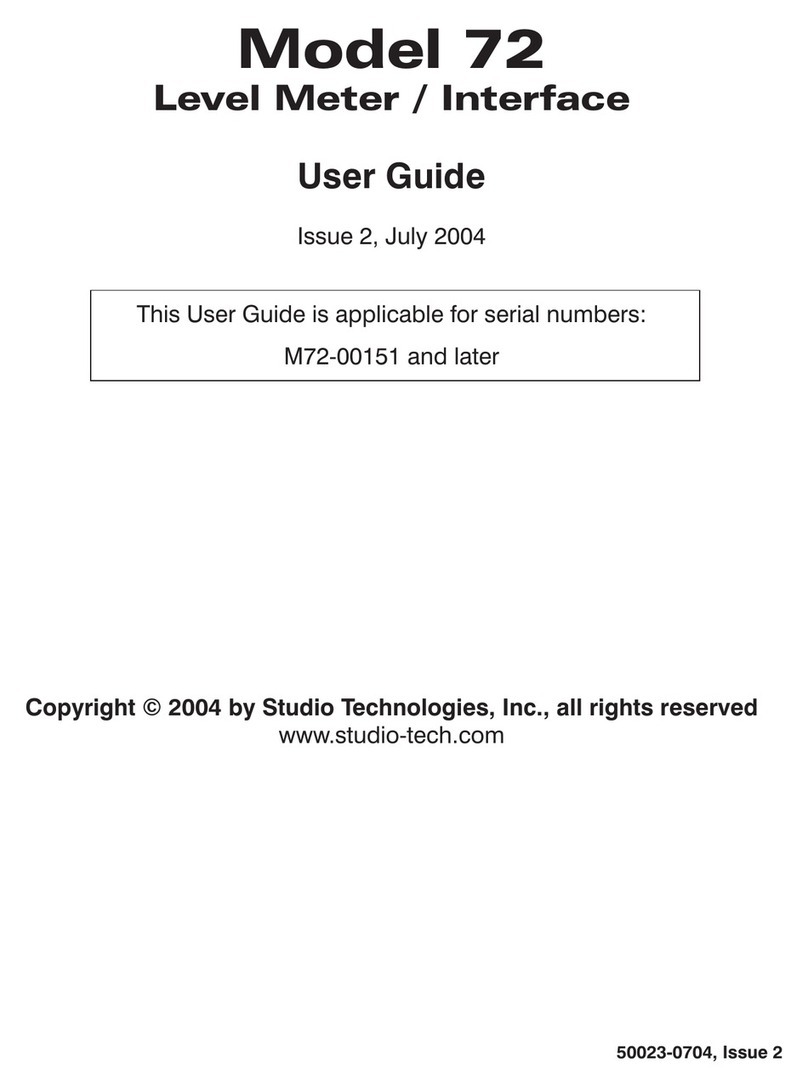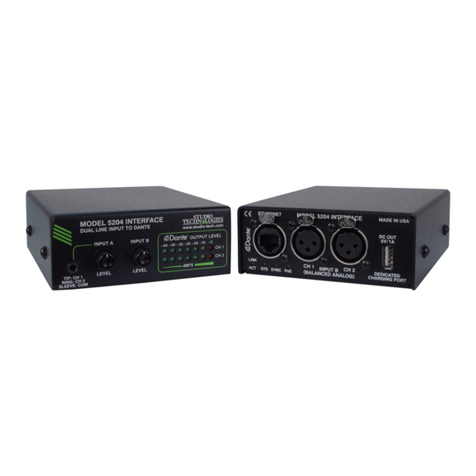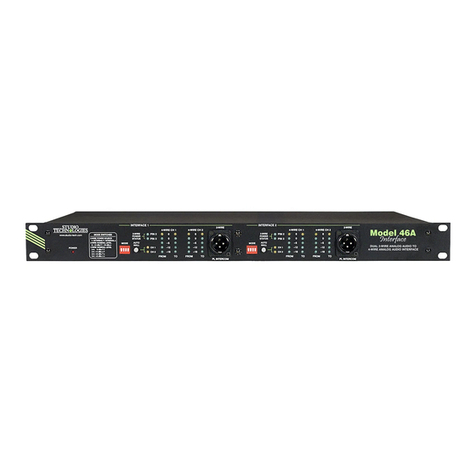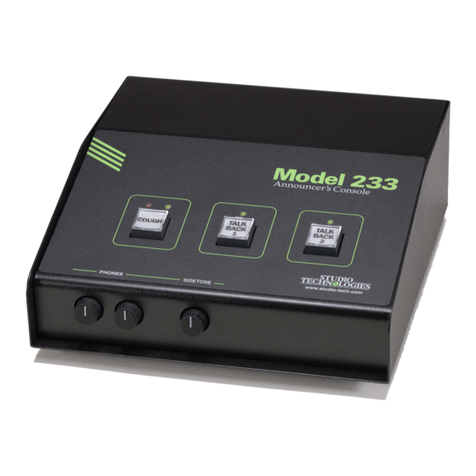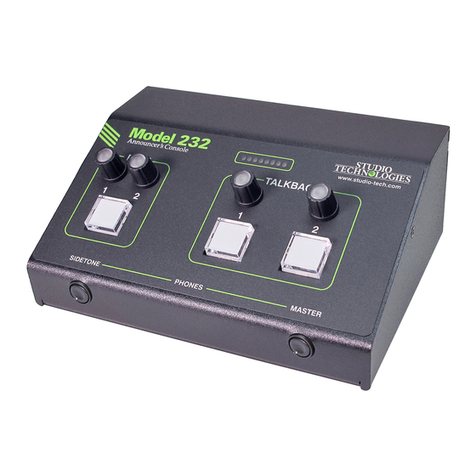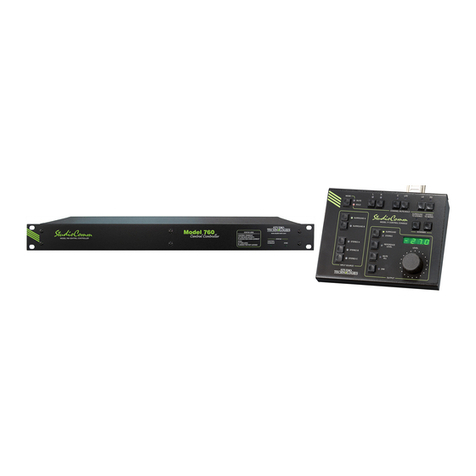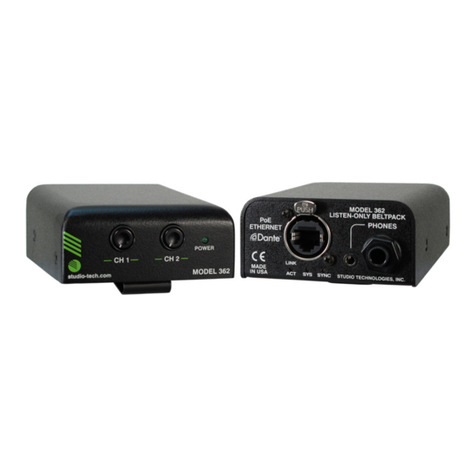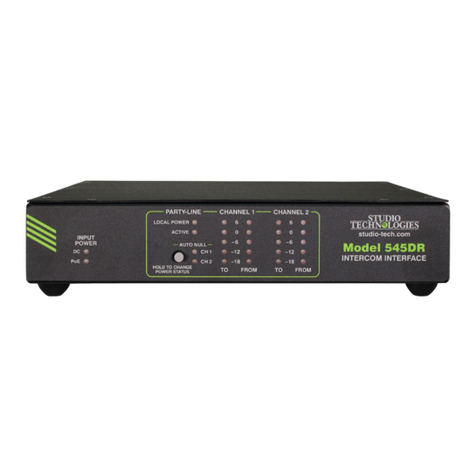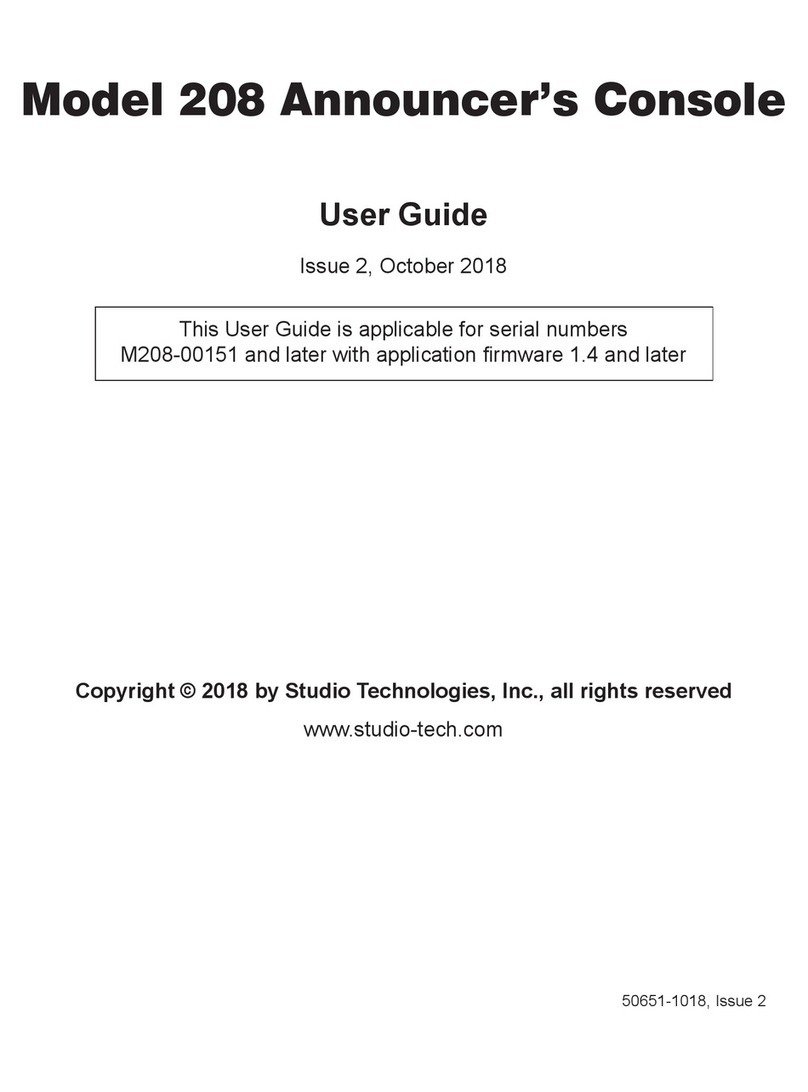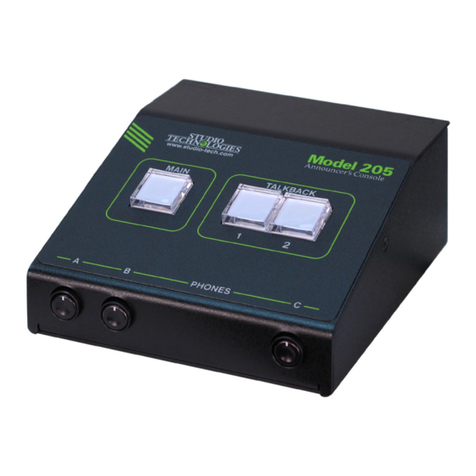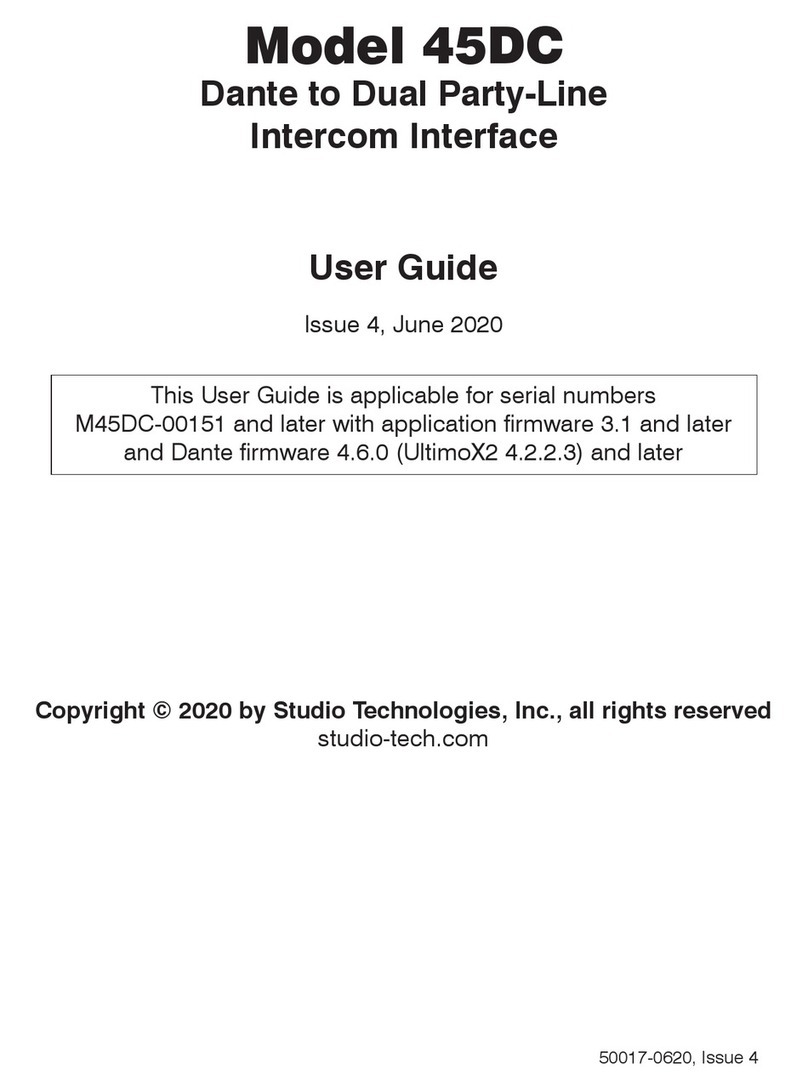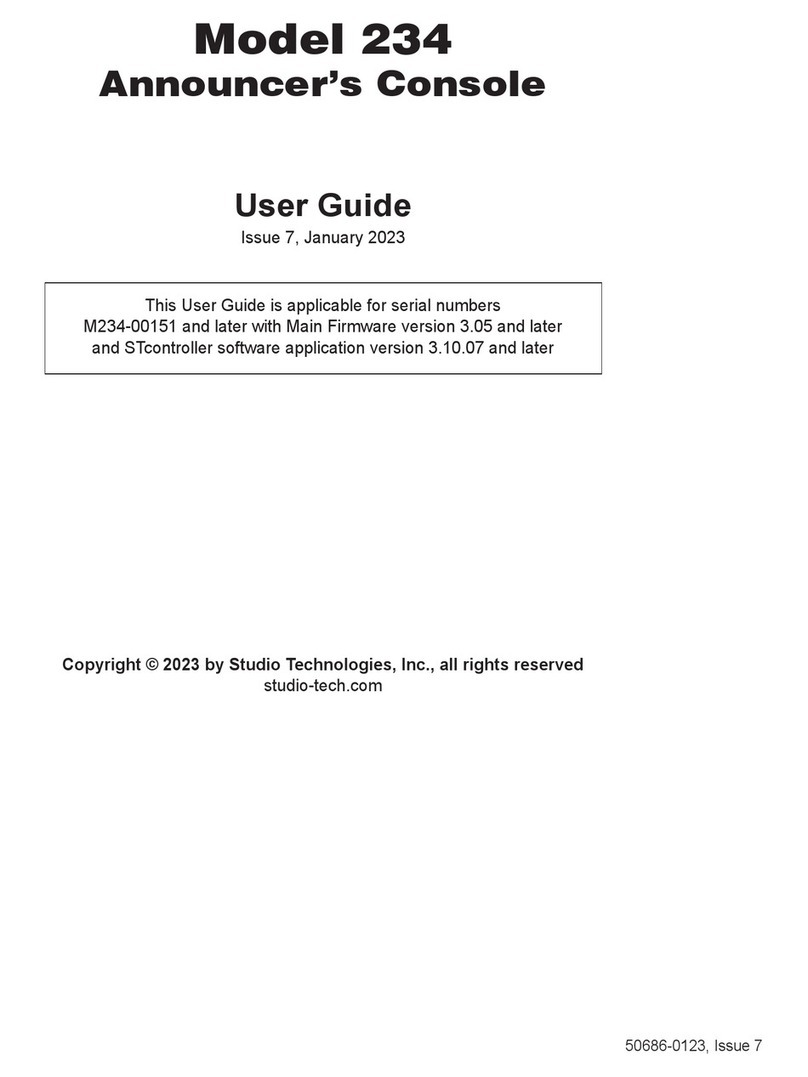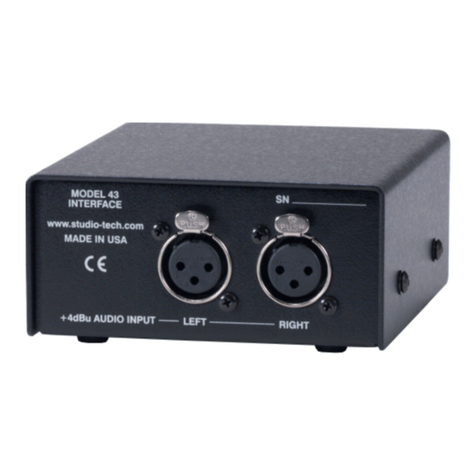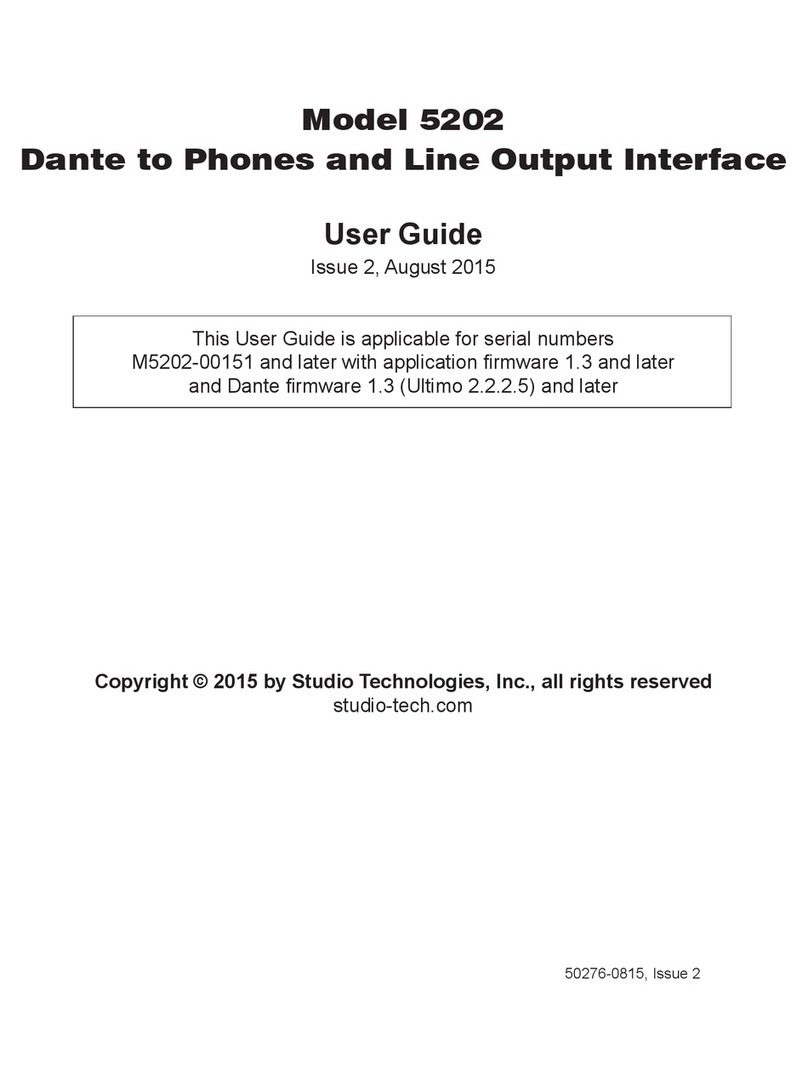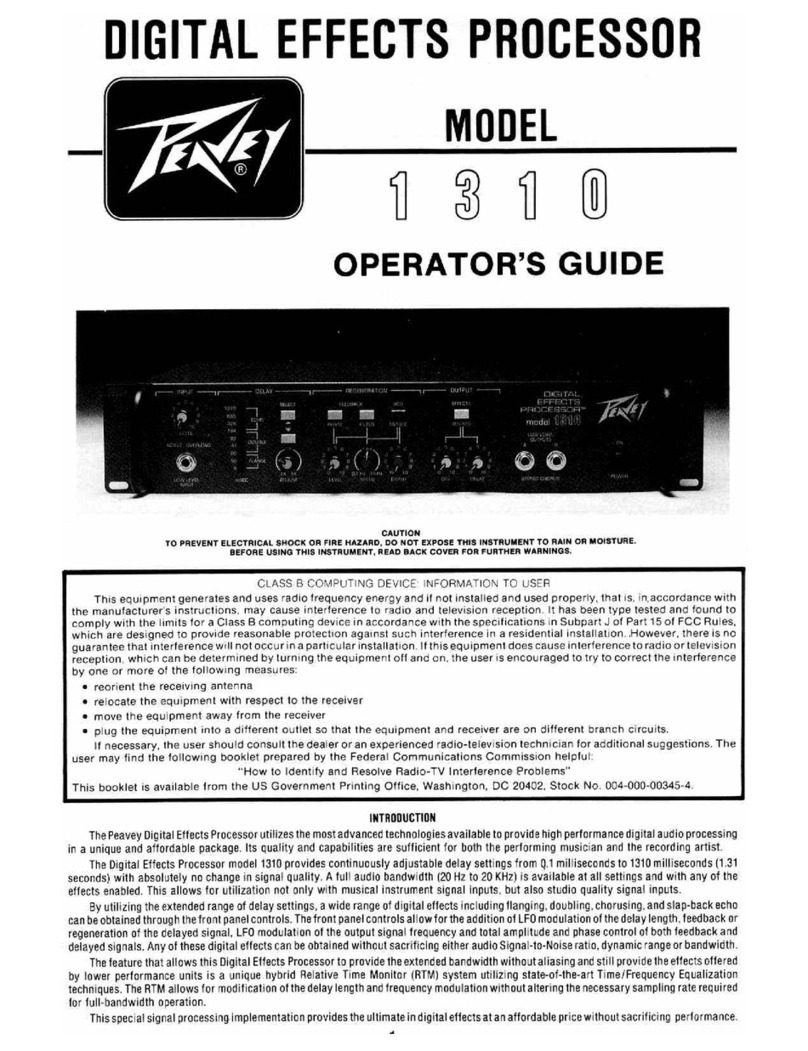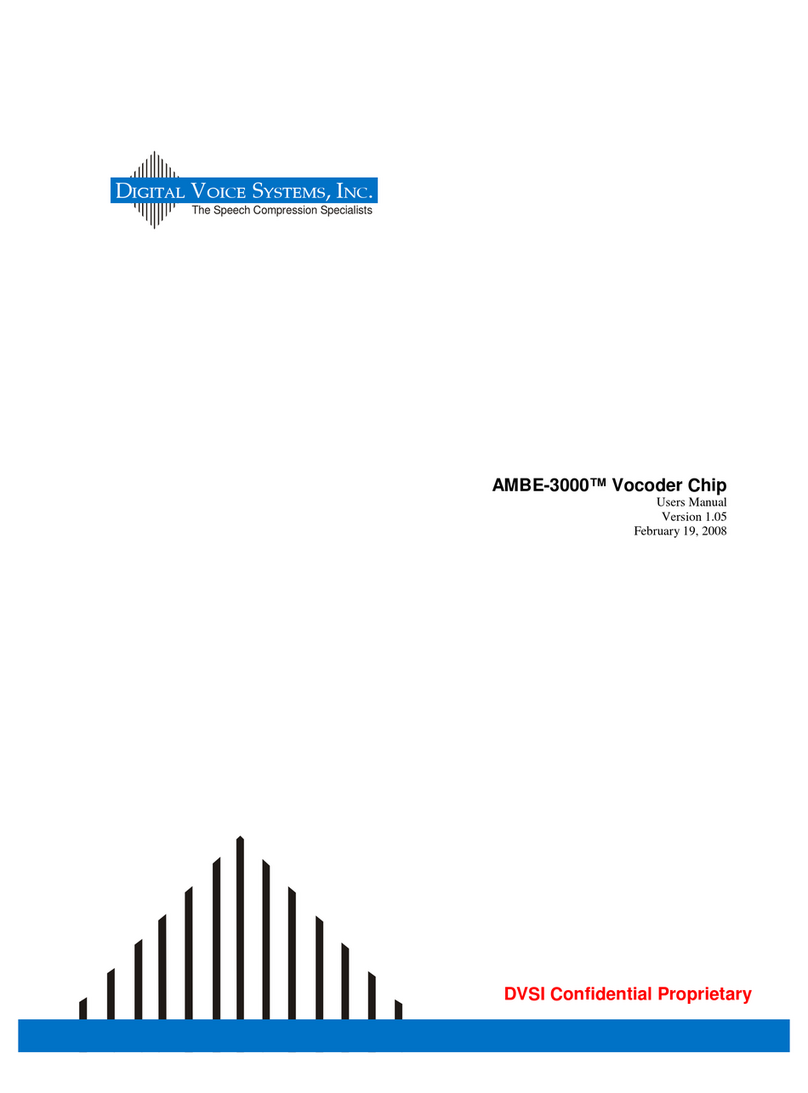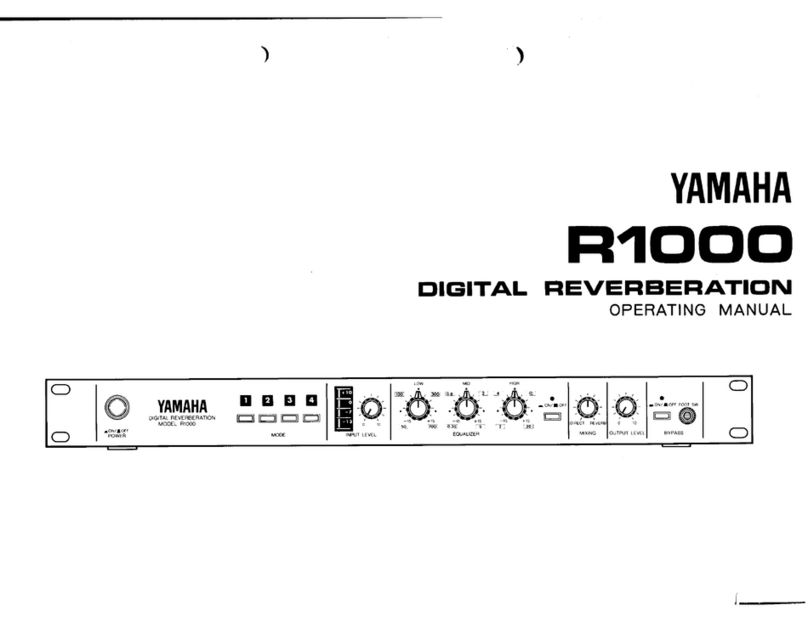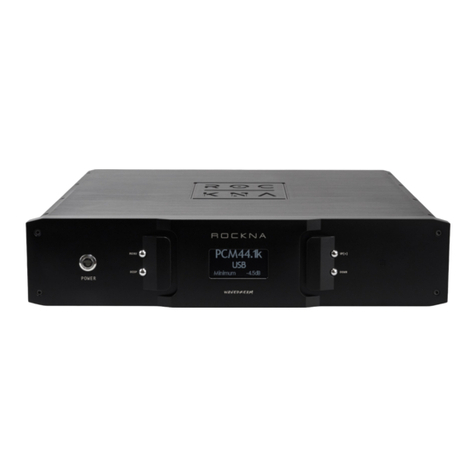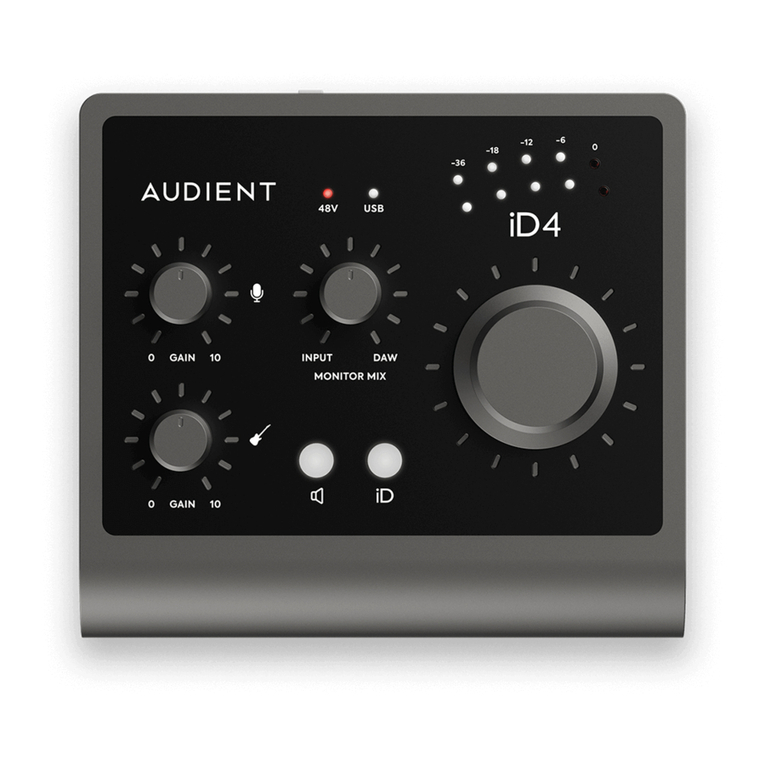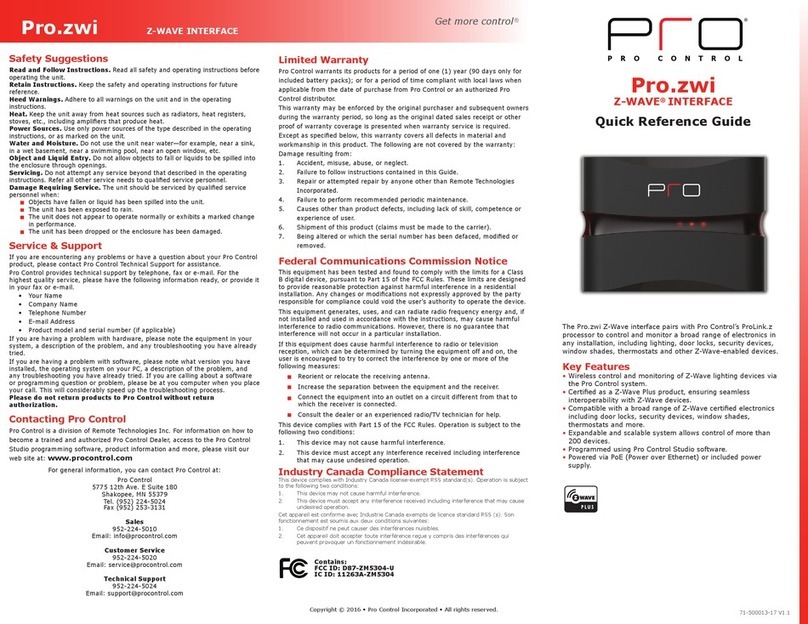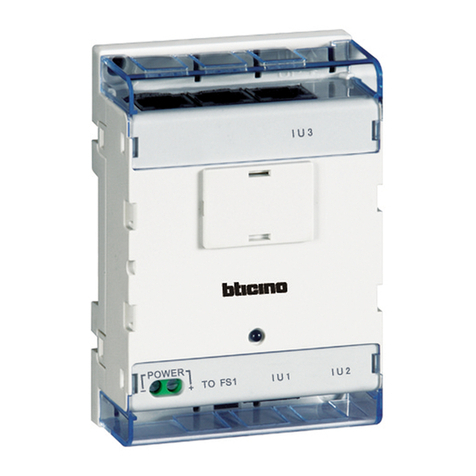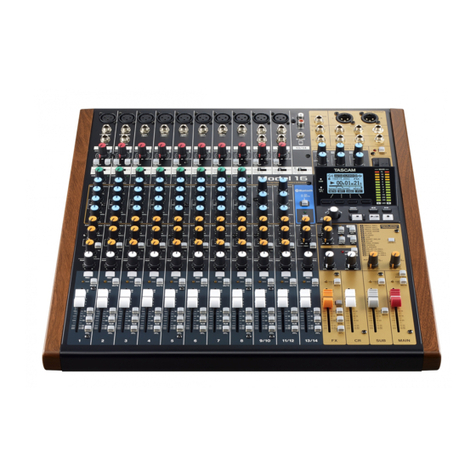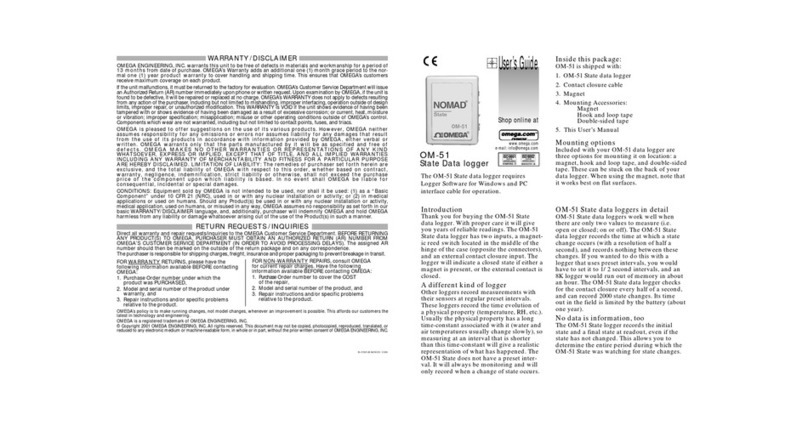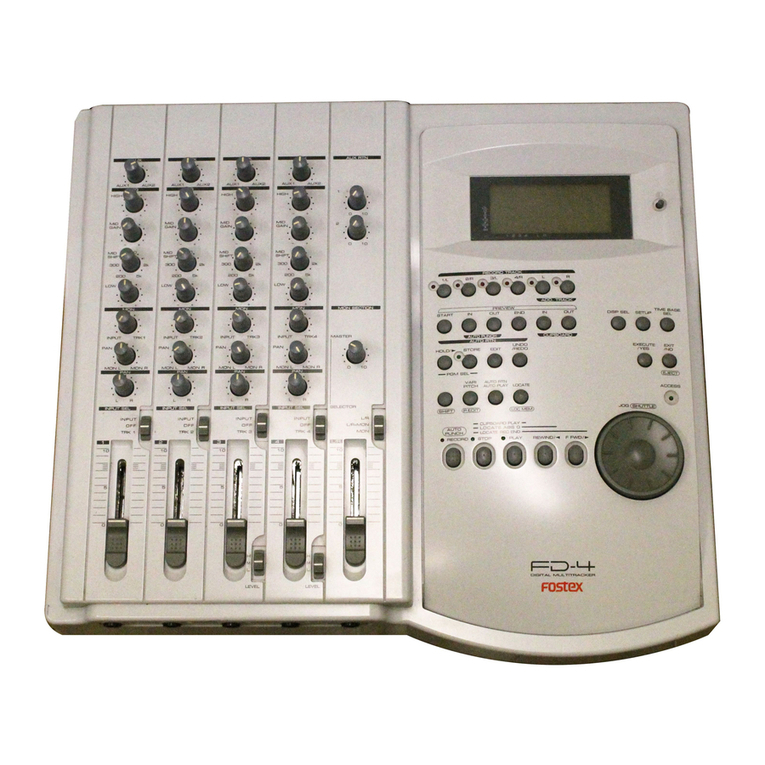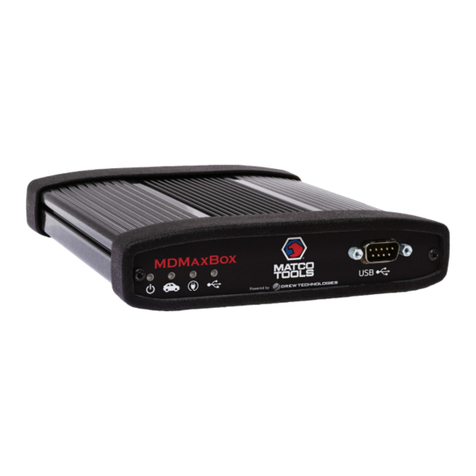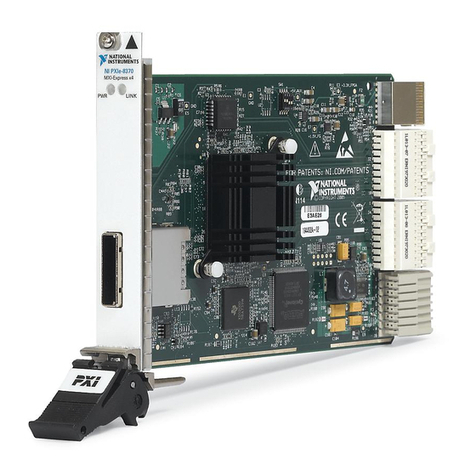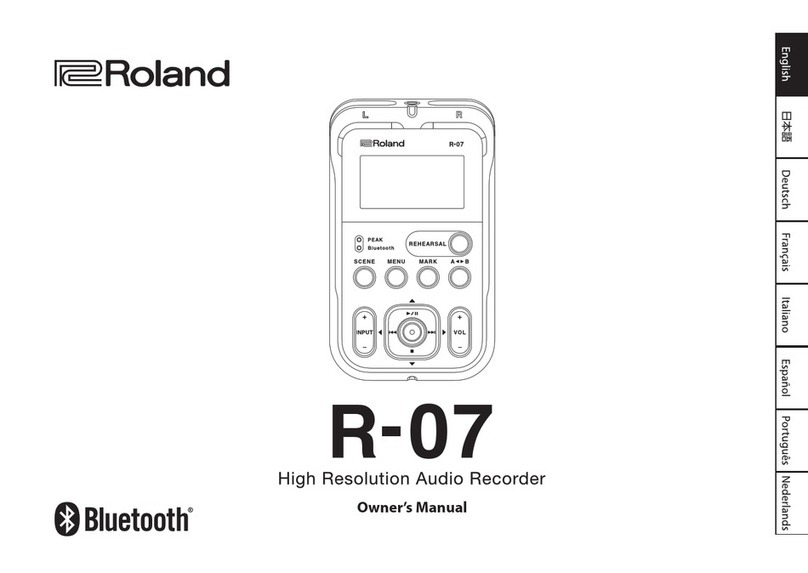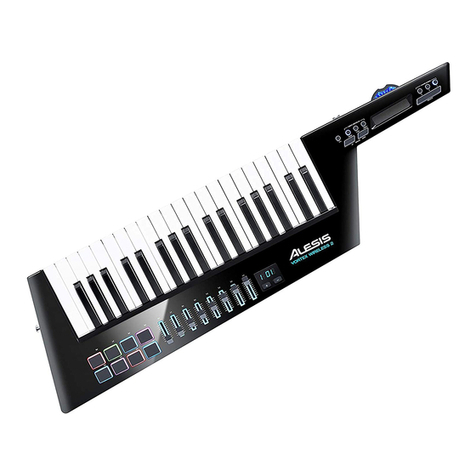
Issue 6, February 2023 Model 44D User Guide
Page 12 Studio Technologies, Inc.
correct operation. The DC source should
be terminated to a 4-pin female XLR con-
nector with pin 1 negative (–) and pin 4
positive (+). Purchased as an option, the
PS-DC-02 power supply is available from
Studio Technologies. Its AC mains input
allows connection to a 100-240 volts,
50/60 Hz source and its 12 volt DC, 1.5
amperes maximum output is terminated
on a 4-pin female connector.
As previously discussed, an Ethernet con-
nection that provides Power-over-Ethernet
(PoE) can serve as the Model 44D’s power
source. Alternately, an external 12 volt DC
source can be connected. For redundan-
cy, both PoE and an external 12 volt DC
source can be connected at the same
time. If both PoE and an external 12 volt
DC source are connected, power will be
drawn only from the PoE supply. If the PoE
source becomes inoperative the 12 volt
DC source will provide the Model 44D’s
power with no interruption in operation.
(Of course, normal operation will cease if
both PoE and data transport fails on the
Ethernet connection.)
Line Inputs
The Model 44D provides two line in-
puts that are intended for connection to
line-level analog audio signal sources
associated with professional audio and
video equipment. It’s expected that the
nominal level of the analog sources will ei-
ther be +4 dBu for SMPTE applications or
0 dBu for EBU applications. (Refer to the
Conguration section for details.) Com-
monly-used sources could include analog
I/O ports on broadcast matrix intercom
systems, audio consoles, video storage
and playback systems, wireless micro-
phone receivers, and audio testing equip-
ment. The circuitry associated with the line
inputs is analog, electronically balanced,
capacitor coupled, with an impedance of
20 k ohms.
Two 3-pin female XLR connectors, located
on the Model 44D’s back panel, are used
for interfacing with the source signals.
Prepare 3-pin male XLR mating connectors
such that pin 2 is signal high (+), pin 3 is
signal low (–), and pin 1 is common/shield.
It’s also highly possible that an unbalanced
source will interface correctly. With an
unbalanced source begin by connecting
signal high (+) to pin 2 and signal low/
shield (–) to both pins 1 and 3. If this results
in hum or noise, next try connecting sig-
nal high (+) to pin 2 and signal low/shield
(–) only to pin 3; leave pin 1 unconnected
(“oating”).
If the Model 44D has been congured to
operate in the tone generator mode the
two analog line inputs will not be active.
As such, no connections should be made
to either line input channel 1 or line input
channel 2.
Line Outputs
The Model 44D provides two line outputs.
These analog outputs are designed for
general-purpose use which could include
connecting to analog inputs on devices
including matrix intercom systems, trans-
mitters associated with wireless in-ear
monitors, audio consoles, or amplied
speakers. The circuitry associated with the
line outputs is analog, capacitor-coupled,
and has a source impedance of 200 ohms.
It will perform optimally when driving loads
of 2 k (2000) ohms or greater. The nominal
level of the line outputs is congurable to
be either +4 dBu or 0 dBu, corresponding
to SMPTE or EBU applications. (Refer to
the Conguration section for details.)




















